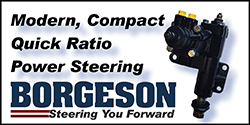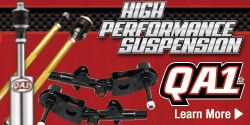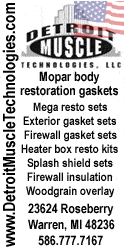this was a BB 509 cam. how do you think that would work? what about the newer 509 cam?
I'm not into BBs , so IDK where that cam might peak, but here's a VP comparo, still at 10.7 SCR, and with the ICA of 70* that the 292/509 cam might be installed at.
This at 4.34x3.75-444cid
Static compression ratio of
10.7:1.
Effective stroke is 2.75 inches.
Your dynamic compression ratio is 8.11:1 .
Your dynamic cranking pressure is 162.74 PSI.
V/P (Volume to Pressure Index) is 159..........................................................
159,
so that's getting somewhere again
Try this444
Static compression ratio of
11.1:1.
Effective stroke is 2.78 inches.
Your dynamic compression ratio is 8.49:1 .
Your dynamic cranking pressure is 172.68 PSI.
V/P (Volume to Pressure Index) is 165.............................................................
170
or this 444 with aluminum heads
Static compression ratio of
11.5:1.
Effective stroke is 2.75 inches.
Your dynamic compression ratio is 8.70:1 .
Your dynamic cranking pressure is 178.21 PSI.
V/P (Volume to Pressure Index) is 174.............................................................
174
Perhaps a bit much for street work
As you can see, the only parameter I changed was the Scr. And you can see the progression in VP from 159, to 170 to 174. These represent increases of 170/159= plus 6.92% and 174/159=plus 9.4%. These increases can be roughly thought of as being an equal increase in torque (power for those that like to argue) on the starting line.
Conversely 159VP is very strong street 360, say with a 272cam
Static compression ratio of 10.9:1. (I had to bump it up to get the VP of 159)
Effective stroke is 2.84 inches.
Your dynamic compression ratio is 8.85:1 . (So aluminum heads will likely be a must)
Your dynamic cranking pressure is 182.17 PSI.
V/P (Volume to Pressure Index) is 159 (This is about what I run).............................
159
So you can directly compare your lowVP444 to that hotted up 360 with the same VPs namely 159
Keep in mind that this VP number very quickly decays with rpm and the 444, by 3500rpm will be showing a very distinct cid advantage.
This VP number is
just a tool to compare low rpm torque.
As in; why is my 292 equipped LowC-318/904 such a dog until I hit 40 mph..........................
Well, here's why;
Static compression ratio of
8:1.
Effective stroke is 2.43 inches.
Your dynamic compression ratio is 6.13:1 .
Your dynamic cranking pressure is 112.47 PSI.
V/P (Volume to Pressure Index) is 80........................................................................
80
Well your VP is 3 floors down in the basement at 80, that's why!
People talk about large displacement engines eating up duration. And I think the VP tells the story.
Notice the VP of 159 in the
292* equipped 444.
And then notice the VP of 159 in the
272* equipped 360.
For the same low-rpm feeling, the 360
has to give up 20 degrees.
Some day, Some day; I might try that 292 again, in my 360, with Rhoads, or it will be a roller cam. Then maybe I'll have both ends covered,lol. I remember that 292 very fondly from 5500 to over 7000; that was a lot of push. But the 143VP at the bottom was a big disappointment.
That's the best I got
















